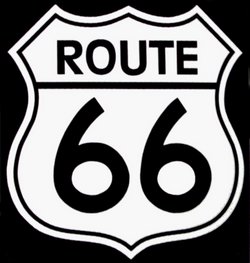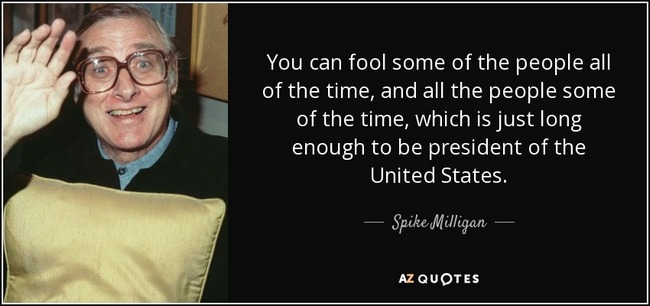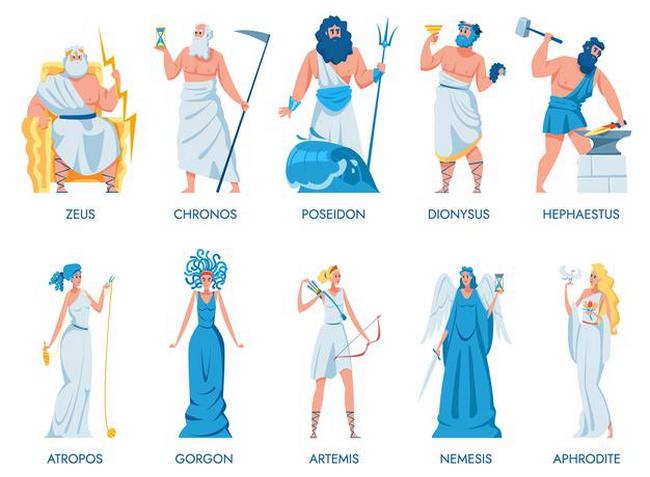The 100 List
The 100 List is one of the main memory techniques you can use to bring your memory up to record-breaking standards. You might think you have a bad memory, but the truth is this: what you have is a memory that is not being used to its fullest extent. Your memory is not faulty. It’s not deficient. Your memory is capable of great things; in fact, your memory capability is astonishing, and its capacity is virtually limitless.
No, but I really do have a bad memory
I know that’s what you think, but I want to assure you that the human brain has enormous memory capacity and capabilities. To all intents and purposes its power is infinite. You can rest assured that if you memorised 1,000 new things every day, your memory capacity wouldn’t be overstretched … ever. So put aside any negative thoughts of memory inadequacy. They only serve to keep you from realising your memory’s true potential.
Okay, so what’s this 100 List?
I first came across this technique in a book by Dominic O’Brien quite a long while ago. He devised it and called it the Dominic System. For my own use I changed a couple of things to suit myself, and I just think of it as the 100 List. It’s based closely on Mr. O’Brien’s system, and it’s almost exactly the same, and it works just fine.
 The purpose of the technique is to make numbers more memorable. Numbers, in themselves, are vague things and difficult to handle. They’re very ‘slippery’ and notoriously difficult to memorise. That’s because they don’t actually mean anything on their own. If you have a number, like 66 for example, the only thing it might bring to mind is Route 66. Or if you’re a bingo player, perhaps you might think of the phrase, clickety-click.
The purpose of the technique is to make numbers more memorable. Numbers, in themselves, are vague things and difficult to handle. They’re very ‘slippery’ and notoriously difficult to memorise. That’s because they don’t actually mean anything on their own. If you have a number, like 66 for example, the only thing it might bring to mind is Route 66. Or if you’re a bingo player, perhaps you might think of the phrase, clickety-click.
But 66 on its own means nothing. It needs to be partnered with something else before it has meaning. If you heard that there were only 66 shopping days til Christmas it might mean something to you. If you heard that somebody had taken an IQ test and was only rated 66, you might feel sorry for them (100 being the average IQ level). If you only had  66 cents or 66 pence in your pocket and nothing in the bank, you’d understandably feel anxious about how you’re going to pay your bills. If the police stopped you and said you’d been clocked at 66 mph in a 40 mph zone, you’d definitely be feeling anxious!
66 cents or 66 pence in your pocket and nothing in the bank, you’d understandably feel anxious about how you’re going to pay your bills. If the police stopped you and said you’d been clocked at 66 mph in a 40 mph zone, you’d definitely be feeling anxious!
In each case, the 66 is only meaningful because it’s attached to something else. A bare number means practically nothing, and because of that it is far from memorable. The 100 List changes all that. It gives numbers a bit of character. It allows them to become easily visual in your mind’s eye.
Is it easy to learn?
No, it’s not. I’m not going to string you along and make out that this technique is simple and quick to learn. That’s just not the case. It’s not a simple system that can be learned in a few minutes; it takes time to prepare the background work, and more time still to put it into operation and use it. In fact, to be brutally honest, it can take quite a while. But the rewards are enormous.
Anything that has a number attached to it becomes a lot easier to memorise. And that includes dates, prices, ages, birthdays, phone numbers, account numbers, pass codes, medical numbers, insurance numbers, ID numbers, catalogue numbers, reference numbers, product numbers, item identifiers … and the list just goes on and on. You could find uses for the 100 List much more often than you might imagine. And if you’re a student, you could use it to learn stuff that would otherwise give you all kinds of trouble, not to mention a headache.
I already outlined the Journey Method, and that is a remarkably useful device for memorising items of any kind. The 100 List partners with the Journey Method, and provides a resource for memorising numbers of any kind. Between the two methods, you have all it takes to memorise virtually anything you might come across in the normal course of events.
So what’s so difficult about learning this technique?
Ah yes, back to learning the 100 List. What makes it less than straightforward to learn is the fact that you have to devise and learn 300 unique pieces of information before you can use the method. Why 300? Well, you’ll have to choose 100 characters, plus 100 unique props, and 100 specific and unique actions. That’s where the 300 comes from.
And you have to create these characters yourself (or choose them, more accurately), so they will be more easily memorable to you. Dominic O’Brien used a system where each character had to have a particular pair of initials to fall in line with his method. I found that very restrictive, to be honest, so after struggling with it, I eventually scrapped the idea completely; it was making things far too difficult and I couldn’t really see the point of it.
For myself, I chose characters just because I found them interesting and easy to visualise. Sometimes they seemed to fit a particular number, for one reason or another. Their initials meant nothing to me, and didn’t need to. Knowing their initials was meant to make learning them easier, but putting a number to each character and remembering that number is hardly difficult, is it?
So your task, if you want to use the 100 List, is to come up with 100 individuals, which is one for each of the 100 pairs of digits from 00 to 99. You’ll also have to come up with a specific prop for each individual, and a specific action. This can take some time!
I didn’t find it easy, to be frank, and I changed many of my selections as time went on, because they didn’t seem to do the job, or were difficult to remember, or whatever. Anyway, it took quite a while, and there were times I thought I’d never manage to create a decent list. So you have to be prepared for that; it might take quite a while for you too. But on the plus side, once you have your cast of 100 individuals, together with their unique props and actions, you are well on your way to mastering the vague and uncomfortably slippery world of numbers.
So you have characters, props and actions … now what?
 Ah, this is where the magic begins! Once you have the framework of characters, props and actions, you can interlink them as necessary. You’ll have a table showing all the characters, with their respective props and actions, and you can use this until you’ve memorised each and every one of them. As you use the list, you’ll be getting very familiar with the characters and their attributes, and you’ll be memorising the details bit by bit.
Ah, this is where the magic begins! Once you have the framework of characters, props and actions, you can interlink them as necessary. You’ll have a table showing all the characters, with their respective props and actions, and you can use this until you’ve memorised each and every one of them. As you use the list, you’ll be getting very familiar with the characters and their attributes, and you’ll be memorising the details bit by bit.
Now, when you’re presented with a long number, a phone number for example, you can assign a character to the first two digits. The following two digits will provide the character’s prop (actually, the second pair of digits will alert you to a different character, but you’ll only be interested in that character’s prop!). The third two digits will determine the character’s action (it will be the action linked to the third character … but it’s only the third character’s action you’re concerned with).
You’ll proceed this way through the number, creating a short scene on your mental screen for each six digits, and you’ll connect them to each other in meaningful ways. And, very importantly, you will also introduce the person into the scene (the person whose phone number you’re memorising, if that’s what you’re memorising), so that whenever you think of that scene the person will come to mind, and conversely, when you think of that person, the scene will come to mind.
It takes much, much longer to describe this process than to do it (although you won’t find it easy at first, and it will take practice). When you’ve got used to all the different characters and their props and actions, you’ll be able to devise interesting and amusing little scenes which will make memorising phone numbers a lot more fun and mere rote memorisation.
And speaking of actions, don’t just do the obvious action that springs to mind. What I mean is, if the action of a certain character is fishing, don’t just have him standing on the bank of a lake, having him casting his line ten times further than would normally be possible and hooking something extraordinary … or something equally weird. If the character’s action was knitting, don’t have him/her sitting and quietly knitting. No, no, that wouldn’t do at all. Have the person knitting a piece of work that’s as big as a bedsheet, with knitting needles as thick as cucumbers and five times longer. You get the picture? Make it noticeable … make it vivid … make it really, really weird!
Let’s see it in action!
Okay. To start off, let’s come up with a random phone number. Let’s say it’s 07698 452305 (actually, it doesn’t really matter what number I use, because I’m going to use randomly created imaginary characters anyway!). And let’s say this is your mate Frank’s phone number.

Okay, the first two digits are 07 (and always will be, for UK mobile phone numbers, anyway, because they always start with 07). And let’s imagine the character for 07 is Spike Milligan. The next two digits are 6 and 9. Let’s say you’ve assigned 69 to Buzz Aldrin (because he walked on the Moon in 1969), so we have Spike Milligan wearing a space helmet (the prop you assigned to Buzz Aldrin).
And the third couple of digits is 8 and 4. Let’s say you’ve assigned 84 to Mary Tyler Moore, simply because it (kinda) rhymed with her name and was therefore easy to remember. And let’s say you’ve made washing dishes her action, because she played a housewife in the Dick Van Dyke show (note to anyone ready and eager to complain because I just assigned dishwashing to a woman, back off! This is my imagination, and I’ll do what the hell I like round here!!) ;).
Okay, so now we have Spike Milligan wearing a space helmet and washing dishes. This is as good a time as any to link it to your mate, Frank. Let’s imagine Spike Milligan washing the dishes, and as he finishes washing each one, he slings it to Frank, rather than stacking it neatly in a dish rack. Don’t forget to actually see Frank in this scene, not just tell yourself he’s in it. And Frank, of course, is missing nearly every one of them. Can you hear them smashing to the floor as Frank tries clumsily to catch the plates?
It’s all in the details!
 It’s important to include as much detail as possible, that’s very important, and the details should include as many of your senses as possible. So you want to see the action, and hear it too, if possible, and maybe even feel it as well, maybe imagining a plate smashing and one of the broken pieces slashing across your fingers as you try to catch it (yeah, I know it’s Frank trying to catch the plates, but there’s nothing stopping you extending his senses to yourself, for the purpose of making the memory more effective).
It’s important to include as much detail as possible, that’s very important, and the details should include as many of your senses as possible. So you want to see the action, and hear it too, if possible, and maybe even feel it as well, maybe imagining a plate smashing and one of the broken pieces slashing across your fingers as you try to catch it (yeah, I know it’s Frank trying to catch the plates, but there’s nothing stopping you extending his senses to yourself, for the purpose of making the memory more effective).
 You’d go on this way, making use of the rest of the digits. Let’s say the next two (5 and 2) signified Abraham Lincoln, and the two after that (3 and 0) were personified by Frank Sinatra. So you’d bring Abraham Lincoln into the action, wearing or using Frank Sinatra’s prop. That leaves just a single digit. You could use a memory shape or some kind of specific and unique prop for each of the ten single digits (that’s including the zero) in order to tidy up the end of any long number. In this case, let’s say you chose a glove as the prop for 5 … so you’d have Abraham Lincoln, with Frank Sinatra’s prop (maybe his microphone?), catching something, or holding something, in a massively oversized glove, or being struck in the face by a hugely oversized glove.
You’d go on this way, making use of the rest of the digits. Let’s say the next two (5 and 2) signified Abraham Lincoln, and the two after that (3 and 0) were personified by Frank Sinatra. So you’d bring Abraham Lincoln into the action, wearing or using Frank Sinatra’s prop. That leaves just a single digit. You could use a memory shape or some kind of specific and unique prop for each of the ten single digits (that’s including the zero) in order to tidy up the end of any long number. In this case, let’s say you chose a glove as the prop for 5 … so you’d have Abraham Lincoln, with Frank Sinatra’s prop (maybe his microphone?), catching something, or holding something, in a massively oversized glove, or being struck in the face by a hugely oversized glove.
But it’s so intricate and complicated …
I know, I know … see, that’s kinda the idea! You want it to be complicated and very, very detailed because that’s precisely the kind of thing your brain loves to latch onto. If you pay close attention to all the details, your brain will love you for it! It feeds on details! It’s gasping for details like a meth addict! And it just loves it when you involve all your senses. It gets busy then, creating a really detailed, multi-sensory memory of the whole thing, and it stores it away carefully, because it sees it as something really important.
Once you start using this technique, you’ll soon memorise all the characters and their respective props and actions. Pretty soon you’ll be using the 100 List to handle all your numbers. You’ll be the odd one out when it comes to phone numbers; you’ll be able to rattle them off from memory, and without depending on your smartphone (well okay, it might take a while, but you’ll get there!).
If you’re taking a phone call and someone asks you for a passcode or an ID number or a medical number or something along those lines, you’ll be able to give them the number without fumbling for the number in a list or a phone book – you’ll have them all to hand.
How about if some ‘scenes’ get repeated?
You needn’t worry about that! Every time you come across variations of characters and their props and actions, you’ll just naturally use your own creativity to come up with new scenes and variations. And the number of combinations is quite large anyway. It’s hardly likely that you’ll very often be faced with exactly the same number of permutations. In fact, the 100 List, by its very nature, gives you access to one million permutations!
Come off it now … a million??
That’s right. You have one hundred characters, right? And each character has a unique prop, and a unique action. That’s a hundred props and a hundred actions. If you multiply one hundred by one hundred by one hundred (100x100x100) you’ll find it comes neatly to one million.
So the chances of your little scenes becoming repetitive is really tiny, and definitely not worth worrying about. Not to mention the fact that anytime you use a combination you’ve used before, you’ll probably automatically come up with some new and quite weird way to animate it, perhaps involving different emotions and reactions.
So get busy and create your own 100 List!
Create a table, either on paper or on the computer, and make it 4 columns and 100 rows. The first column is for the numbers; they start at 00, then 01, then 02, etc, up to 09, then 10, 11, 12, etc. They continue all the way to 99, and that means every conceivable combination of two digits is accounted for.
The second column is for the character’s name. The third one is for that character’s prop, and the fourth is for his or her specific action. This gives you a table of 100 characters, each complete with his or her own unique prop and action, so you’re then equipped to handle any number at all, regardless of how long.
How do I choose a prop for someone?
The props don’t need to be anything special. What I mean by that is, if the character you’ve chosen is bald (Kojak, for example, or Yul Brynner), then you could make baldness his prop. So if you start with a different character, even a female one, and Kojak is indicated by the second pair of digits, then the female character would be bald. Of course, if it was Kojak, sucking a lollipop would make an excellent action for him (or her, if it was being applied to a female).
You could have a music star (Elvis, perhaps, or Paul McCartney) whose action is playing the guitar. Another one might have piano playing as his action. A politician might have bringing his fist down forcefully onto a table to emphasise a point as his action. If you chose Clint Eastwood as a character, you could have his poncho as his prop. Maybe his action would be smoking a slim cheroot. Uncle Jed (from The Beverly Hillbillies) could have whittling a stick as his action. Maybe James Bond’s prop could be a shoulder holster. And his action might be spinning a roulette wheel.
Use any prop that suggests itself, just as long as it fits the character and is closely linked to that character in your mind. You can make up props and actions if you like; after all, it’s your list, and it’s your imagination … you can do whatever you like. If you’ve got Count Dracula as a character and you can’t think of a good action for him, make one up … maybe have him filing his fangs to a sharp point with a really small file! You could have Spiderman as a character if you want, and have him shooting a web as his action. Do you see how some of these actions lend themselves to weird and wonderful action scenes?
Range far and wide in your search for characters

Don’t restrict yourself to celebrities for your characters. If a serial killer appeals to you as a good character (er, not in that sense!), then use his MO or something about him as his prop and his action. It’s gory, I know, and if his victims’ families knew you were using him as a character they wouldn’t be impressed, I’m sure, but nobody will ever know who is in your 100 List, or what they’re doing. It’s your business, and yours alone.
Getting back to how to use these characters: all you have to do is start with the first two digits – this gives you the first character in your little scene. Then you see what the second pair of digits gives you, in the shape of someone’s prop (this then becomes your [first] character’s prop). The next pair of digits tells you what action is going on. Your character takes on this action, using (or wearing) the prop just assigned to him. This links in some strange or odd way to the next character, which is determined by the next two digits, and he’s using/wearing the prop of the next pair of digits, and using it for the action determined by the next pair … and so on.
Sorry if this sounds ridiculous or complicated. It’s meant to be ridiculous … or at least, the resulting scene in your mental mini-movie is (the more ridiculous, the better). And yes, it is complicated, or at least the explanation of it is. Trust me, it’s a lot easier to create these scenes than to try to explain them in detail!
Put the subject of the number squarely in the scene
Don’t forget, it’s very important to integrate the person concerned into the action. In other words, if it’s the phone number of your accountant, imagine him being the subject of the first character’s action, or standing and watching it, or directing it in some way, or make the action take place in his office. Pay close attention to this, otherwise you’ll end up remembering a string of phone numbers, for example, without a clue who they belong to.
The same thing applies to a list of product numbers, as another example; you’d have to somehow include the product into the product number scene that you’re memorising. And if you’re memorising a list of Oscar-winning movies, then include a scene from the movie, or one of the main characters, or some kind of symbol that would indicate which movie the number/date refers to.
The same thing applies to anything, really. If you’re trying to memorise historical dates, don’t just memorise the date (which, on its own, would be completely pointless), instead actually link it in some way to the event that took place on that date, whether that’s a battle, or a marriage, or an invasion, or whatever. By now you’ll either think this is a tremendous memory system, or alternately you might think this is so contrived and confusing that it’s unworkable.
Just use the method! Judge it later
The answer to that is to suspend any ideas you might have that this is a very complicated and difficult system. Instead, just use it! Just set yourself the task of memorising a short series of dates, for example. Look up the dates of some significant battles in history, and make a list of them. Let’s say you have 10-20 listed. Now you know that would be a difficult list to memorise without a proper system, right? You might manage to memorise them, but your memory of the dates, and what happened on those dates, would probably only be temporary.
Now get to work creating little mind-movies of all the battles (or whatever), using the dates, of course, and not forgetting to include something to clearly indicate what battle it was, or who were the main participants. Just accept the fact that this, being the first time you’ve tried to put the 100 List into action, might feel awkward and might take a while, but keep at it.
Once you’ve memorised the list of dates, you’ll find it pretty easy to put a date to any of the battles, and you’ll feel you actually know the dates, rather than having just learnt them by rote. If you’re not sure that’s the case, move on to another memory task, and give your first one a quick review while you’re at it. You’ll find that you really are learning these facts, and learning them in such a way that, with the occasional quick review, those facts will become part of what you know long term.
You can use this system to learn facts about ancient Rome and ancient Greece, or about their mythology. You can learn about the rulers of ancient Egypt. You can learn about the kings and queens of England and Britain. You can absorb facts about the wars that have been fought over the last several hundred years, or even longer. You might want to become more closely acquainted with pre-history and the different eras, such as the Jurassic, the Devonian, the Triassic and the Permian.
Hold on, do I have to learn all this??
Relax, take it easy! If you don’t want to learn anything, don’t. It’s up to you. Just use the 100 List to help you remember important dates, bank numbers, phone numbers, that kind of thing. I’m just explaining how useful it can be if you want to apply it to learning more stuff.
What I’m pointing out is that all this, and much, much more, can become available to you, and can be learned much easier than you ever learned this type of stuff at school. And the more you know of history, the more sense you can make of it, because it all hangs together by dates. And you can, with the 100 List, memorise those dates a lot more easily now.
Your understanding of these facts will become so much clearer, and you will find yourself absorbing so much more information on any subjects you care to study, because now you can ‘see’ them in your mind’s eye. No longer will the dates be just inert, faceless numbers, heard for a moment, only to be forgotten five minutes later. The dates, and lots of associated facts, will be linked indelibly in your mind.
Just be sure to make careful notes on the things you memorise. What starts out quite small can quickly become a wide-ranging field of rapidly growing knowledge. If you don’t make notes on any of it, your memorisations will start to become anything but well-ordered and useful. In fact, they’ll probably be of very little use to you at all, and might even just add to your old idea that your memory is faulty and unreliable.
Use your 100 List any way you care to
You can choose to use your List to memorise just your personal data, or you can use it to broaden your knowledge of just about anything. The choice is yours! You have the technology now to transform numbers, which once were only vague and amorphous things, into very clear and distinct characters, full of personality. Use this new approach and see how it can transform your grasp of almost anything connected with numbers.
